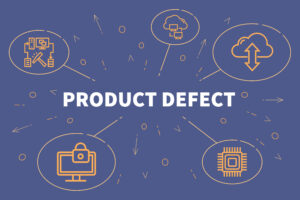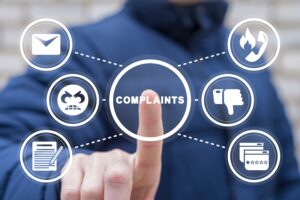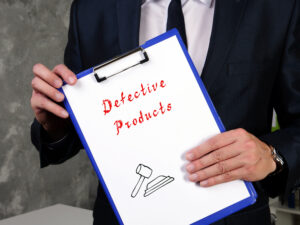We use countless consumer products in our daily lives, from the cars we drive to the appliances in our homes, trusting that they are safe and will function as intended. Unfortunately, defective products sometimes slip through the cracks, causing serious injuries to unsuspecting consumers.
If a faulty product has harmed you or a loved one, you can file a product liability claim to seek compensation for your damages. These cases are highly complicated and technical, so you need a Cape Girardeau product liability lawyer handling your claim from the very start.
Understanding Product Liability
Product liability refers to the legal responsibility of manufacturers, distributors, suppliers, retailers, and others who make products available to the public and who have to ensure their products are safe and do not cause harm. Three main types of product defects can lead to a liability claim:
Design Defects: Hidden Dangers of Flawed Products
Design defects are perhaps the most dangerous type because they make a product inherently dangerous, even when manufactured according to specifications. In these cases, the flaw lies in the product’s design, meaning that every unit produced carries the same potential for harm.
Examples of design defects include a top-heavy SUV that is prone to rolling over, a laptop battery that can overheat and catch fire, or a medical device with a shape that promotes bacterial growth. These defects often stem from a failure to adequately test the product, prioritize safety over other features, or consider foreseeable misuses.
Proving a design defect typically requires demonstrating that the product’s design was unreasonably dangerous and that a safer alternative design was feasible and economically practical. This often involves professional testimony from engineers, safety specialists, and other professionals who can analyze the product’s design and identify its flaws.
If a product’s design is defective, the manufacturer may be required to issue a recall, modify the design, or compensate injured consumers. In some cases, design defects may also lead to class action lawsuits, allowing multiple victims to seek justice together.
Manufacturing Defects: When Good Designs Go Bad
If something goes wrong during manufacturing, it can render even a well-designed product dangerous. Manufacturing defects occur when a product deviates from its intended design due to an error or defect in the production process, resulting in a flawed or dangerous unit.
Examples of manufacturing defects include a bicycle with a cracked frame due to improper welding, a medication contaminated by bacteria during the packaging process, or a car with missing brake pads. Human error, equipment malfunctions, or the use of substandard materials can cause these defects.
Unlike design defects affecting every product unit, manufacturing defects are typically limited to a specific batch or production run. This can complicate detection and proof, as the defective units may be indistinguishable from safe ones.
To establish a manufacturing defect, plaintiffs must show that the product that caused their injury deviated from the manufacturer’s specifications or intended design. This may involve comparing defective units to properly manufactured ones, examining quality control records, or consulting manufacturing professionals.
Holding manufacturers accountable for manufacturing defects encourages them to implement strict quality control measures and promptly address any issues that arise during production. By filing a product liability claim, injured consumers can seek compensation for their damages and help prevent future injuries by highlighting dangerous manufacturing practices.
Warning Defects: The Dangers of Inadequate Instructions and Warnings
Consumers may face danger from a well-designed and properly manufactured product if they lack adequate instructions or warnings about its potential risks and proper usage. Warning or marketing defects occur when a manufacturer fails to provide sufficient information to enable consumers to use the product safely.
Examples of warning defects include medications that do not list important side effects, cleaning products that do not warn of their flammability, and power tools that lack instructions on proper grounding.
These defects can arise from a failure to identify foreseeable misuses, inadequate testing, or a desire to downplay risks to make the product more appealing.
To prove a warning defect, plaintiffs must typically show that the manufacturer knew or should have known about the product’s potential dangers, that the warnings provided were inadequate, and that the lack of proper warnings directly contributed to their injuries. This may involve consulting with professionals in product safety, human factors engineering, and risk communication.
Manufacturers must provide clear, conspicuous, and comprehensive warnings and instructions that communicate a product’s risks and enable consumers to use it safely. This includes considering factors such as the product’s intended use, foreseeable misuse, and the knowledge and experience of the target audience.
If you or a loved one has suffered an injury by a product with inadequate warnings or instructions, seek the guidance of an experienced product liability lawyer. Don’t let a manufacturer’s warning failure put your safety at risk. Take action today to protect yourself and others from the dangers of warning defects.
Gathering Evidence

This may include:
- The defective product itself (if possible, preserve it in the condition it was in when the injury occurred)
- Photos or videos of the product and your injuries
- Medical records documenting your injuries and treatment
- Witness statements
- Proof of purchase (receipt, invoice, etc.)
- The product manual and any warnings or instructions provided
- Other complaints or lawsuits involving the same product
Keep detailed records of all expenses related to your injury, such as medical bills, lost income, and property damage. These documents will be essential in determining the value of your claim.
Statute of Limitations
Knowing the statute of limitations for filing a product liability claim in your state is wise. This deadline marks when you must file your lawsuit, and missing it may bar you from seeking compensation.
In most states, product liability claims typically have a statute of limitations ranging from one to six years from the injury date or the discovery of the defect. Consult an experienced product liability attorney to ensure you don’t miss any important deadlines.
Determining Liability
To succeed in a product liability claim, you must prove that the defective product caused your injuries and that you were using the product as intended or reasonably foreseeable. You’ll also need to identify the parties responsible for the product’s defect. This may include the manufacturer, distributor, supplier, or retailer, depending on the circumstances.
In some cases, multiple parties may share liability for a defective product. For example, if a design defect originated with the manufacturer but the retailer sold the product knowing it was dangerous, both parties can be liable.
Filing Your Claim
Once you’ve gathered evidence and identified the liable parties, you can file your product liability claim. The process typically involves:
Sending a Demand Letter
When you’ve suffered an injury from a defective product, sending a demand letter is often the first step in seeking compensation for your damages.
A demand letter is a formal document that notifies the liable parties, such as the manufacturer or retailer, of your claim and outlines the damages you have suffered.
In your demand letter, your attorney will clearly describe the incident that led to your injuries, the nature and extent of your damages, and any supporting evidence you have gathered. This may include medical records, witness statements, and photographs of the defective product and your injuries.
Outlining your damages, which may include medical expenses, lost wages, pain and suffering, and any other costs associated with your injury, be thorough and specific. Your attorney should also include a specific settlement demand, which is the money you seek to resolve your claim.
Sending a demand letter serves several important purposes. First, it puts the liable parties on notice of your claim and allows them to respond and potentially resolve the matter without going to court. Second, it demonstrates that you are serious about pursuing your legal rights and are willing to take further action if necessary.
Always have the assistance of an experienced product liability attorney who can help you write a compelling letter and negotiate with the liable parties on your behalf.
Filing a Complaint: Taking Your Case to Court

In your complaint, your lawyer must provide a detailed account of the events that led to your injury, the damages you have suffered, and the legal basis for your claim. Depending on the specific facts of your case, this may include allegations of design defects, manufacturing defects, or warning defects.
Your lawyer will also need to specify the compensation you are seeking, which may include economic damages (such as medical expenses and lost income), non-economic damages (such as pain and suffering), and, in some cases, punitive damages (which aim to punish the defendant for particularly egregious conduct).
Discovery
Once you’ve lodged your complaint and the defendant has responded, your case will enter the discovery phase. During discovery, both sides can exchange information and evidence relevant to the case, allowing them to build their arguments and assess the strengths and weaknesses of their positions.
Discovery may include several different tools, such as:
- Depositions: Sworn testimony taken out of court, in which attorneys for both sides question witnesses
- Interrogatories: Written questions that must be answered under oath by the parties to the lawsuit
- Requests for production: Demands for relevant documents, such as design specifications, quality control records, and internal communications
- Requests for admission: Statements that one party asks the other to admit or deny under oath
Through the discovery process, you and your attorney can gather valuable evidence to support your claim, such as professional testimony on the product’s defects, internal company documents revealing knowledge of the defect, and statements from other consumers who have experienced similar issues.
At the same time, the defendant will also have the opportunity to seek information from you, including details about your injury, medical treatment, and any pre-existing conditions that may have contributed to your damages.
Settlement Negotiations or Trial
After the discovery phase, your product liability claim will typically proceed in two directions: settlement negotiations or trial.
Settlement negotiations are often the preferred route for resolving product liability claims. They allow the parties to reach a mutually agreeable resolution without the time, expense, and uncertainty of a trial. During settlement negotiations, your product liability attorney will work with the defendant’s representatives to reach a fair compensation agreement.
Several factors may influence the settlement negotiation process, including the strength of your evidence, the extent of your damages, and the defendant’s willingness to accept responsibility for the defective product.
If a fair settlement cannot be negotiated, your case may proceed to trial. During a trial, both sides present their evidence and arguments to a judge or jury, who will determine the case’s outcome. This may involve ruling on the defendant’s liability, the extent of your damages, and the amount of compensation you are entitled to.
Seeking Legal Assistance

Daniel J. Grimm, Product Liability Lawyer
Product liability cases are challenging to resolve without legal representation. Hiring an experienced product liability attorney can significantly improve your chances of success and help ensure you receive fair compensation for your damages.
An attorney can:
- Thoroughly investigate your claim and gather evidence
- Identify all liable parties
- Determine the full extent of your damages
- Negotiate with insurance companies and opposing counsel
- Represent you in court if necessary
When choosing a product liability attorney, look for someone with a proven track record of success in handling cases similar to yours. Schedule consultations with multiple attorneys to find the right fit for your needs and budget.
Contact a Product Liability Attorney
If you or someone you love has suffered an injury from a defective product, don’t hesitate to take action. Reach out to a skilled product liability lawyer today to discuss your case, understand your rights, and explore your legal options for seeking compensation and justice.



